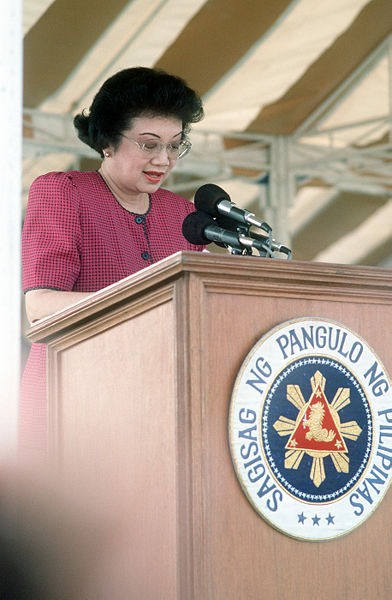<Back to Index>
- Mathematician Joseph-Louis, Comte de Lagrange, 1736
- Painter Govert Flinck, 1615
- President of the Philippines Corazón Aquino, 1933

María Corazón "Cory" Sumúlong Cojuangco Aquino (January 25, 1933 – August 1, 2009) was the 11th President of the Philippines and the first woman to hold such office. Aquino was also the first popularly and democratically-elected female president and head of state in Asia. Aquino is best remembered for leading the 1986 EDSA People Power Revolution, which toppled the authoritarian regime of the late strongman Ferdinand Marcos and restored democracy in the Philippines. Cory, as she is affectionately known, is considered and revered by many Filipinos as the Philippines' Icon of Democracy. She has been hailed by TIME Magazine as the 'Saint of Democracy,' due to her well-known spiritual life and strong adherence to non-violence and democracy. A self-proclaimed "plain housewife", Aquino was married to Senator Benigno Aquino, Jr., the popular opposition leader and staunchest critic of then President Ferdinand Marcos, who was assassinated on August 21, 1983 upon returning to the Philippines after his exile in the United States.
After her husband's assassination, the widowed Aquino became the unwilling and reluctant leader of the opposition against the authoritarian rule of the Marcos regime. She united the fragmented opposition and strengthened its moral crusade against the abuses and excesses of President Marcos' martial rule. In late 1985, when President Marcos called for a snap election, Cory Aquino was called upon by the people to challenge his regime. Reluctant at first, Aquino thrust herself into the political arena after one million signatures urging her to run for president were presented to her.
Despite having no prior political experience, except being her husband Ninoy's wife, Aquino proved to be a charismatic leader, inspiring orator and skilled campaigner. She ran for president with former senator Salvador Laurel as her vice-presidential running mate. When the Marcos allies-dominated Batasang Pambansa proclaimed Ferdinand Marcos as the winner in the 1986 Snap Presidential Elections, Cory called for massive civil disobedience protests against him, declaring herself as having been cheated and as the real winner in the elections. Filipinos enthusiastically heeded her call and rallied behind her. These series of events eventually led to the ouster of Marcos from power and the installation of Aquino as president of the Philippines in February 1986, an event which is now known as the historic 1986 EDSA People Power Revolution.
Now in power, Aquino oversaw the restoration of democracy in the Philippines and the promulgation of a new constitution, which limited the powers of the presidency and established a bicameral legislature. Her administration gave strong emphasis and concern for civil liberties and human rights, peace talks and dialogues with communist insurgents and Muslim secessionists. Aquino's economic policies, meanwhile, centered on bringing back economic health and confidence and focused on creating a market-oriented and socially-responsible economy. Despite these achievements, Aquino's presidency was not smooth-sailing as she had to face series of nine coup attempts against her administration and destructive natural calamities and disasters, which she was able to weather and survive until the end of her term in 1992.
After her term expired in 1992, Aquino returned to private life although she remained active in the public eye, constantly voicing her views and opinions on the pressing political issues in the country. In 2008, Aquino was diagnosed with colon cancer and after a one-year battle with the disease, she died on August 1, 2009.